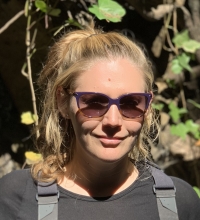In collaboration with the U.S. Geological Survey, this research explored how the presence of carbon varies in space and time across the combined biogeochemical systems of the San Francisco Bay and Delta (Bay-Delta). This synthesis used existing multiyear isotope datasets, seeking new insights into where certain forms of carbon come from and how they are transformed — information that might illuminate future changes in the Bay-Delta. By clarifying earlier conditions, for example, the results will help reveal how upgrades of the Sacramento Regional Wastewater Treatment Plant have altered local biogeochemistry.
Research Conclusions
The project focused on particulate organic matter (POM), which can originate from a variety of sources (phytoplankton, microzooplankton, bacteria, aquatic macrophytes and terrestrial soil and vegetation). The research team paired existing datasets to clarify where POM comes from and how it’s transported through the Bay-Delta. To reveal the broader context, POM data was combined with long-term monitoring program records of total suspended sediment concentrations.
The research team found across the estuary, total suspended sediment (TSS) and bulk POM sources have significantly changed. The landward sites with fresh and brackish water saw declines in TSS and shifts in POM sources, indicating declines in inputs arriving from inland sources such as upstream rivers. More recently, the seaward saltwater sites showed TSS increases, while POM sources shifted less relative to upstream sites.
Ultimately, the results suggest there have been measurable reductions in terrestrial organic matter inputs to the system. This material loss has implications for the dynamics of food webs and the cycling and fate of organic matter throughout the estuary. The research team is working on extending this research to include not just carbon but nitrogen, too.
Attachments
 Christina Richardson
Christina Richardson